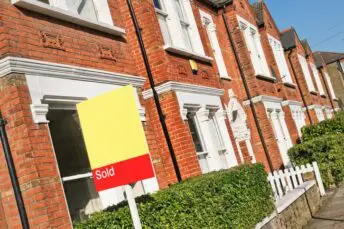House Price Watch Jan 2023
House prices fell in January and the annual rate of house price growth has continued to slow but house prices are still higher than they were at the start of 2022. There are encouraging signs that mortgage rates are beginning to stabilise but with higher borrowing costs, housing affordability remains stretched and activity is likely to remain subdued until real incomes begin to rise and the economic outlook becomes clearer.
What’s happening nationally
House prices are down on average -0.3% in the past month and annual house price growth has slowed to +4.3%.
The indices are showing a range of house price movements over the past month. Most are showing a slight drop or stable house prices, while Rightmove, reporting asking prices in January, saw asking prices increase slightly.
Indices based on:
Land Registry – registered property transactions in December.
Nationwide & Halifax – mortgage valuations in January.
Rightmove – asking prices posted on Rightmove in January.
*Rightmove is not included in the index average as the basis for its index is different (asking price vs agreed sale price)
| Index reports: | Monthly change | Annual change |
|---|---|---|
| Land registry | -0.4% | +9.8% |
| Nationwide | -0.6% | +1.1% |
| Halifax | 0% | +1.9% |
| Rightmove | +0.9% | +6.3% |
| Average change | -0.3% | +4.3% |
House prices in your area
House prices are up in some areas and down in others this month.
- On the up: Wales (+0.7%), Yorkshire & Humber (+0.6%), East Midlands (+0.5%), South East (+0.4%)
- Down: Scotland (-2.9%), Northern Ireland (-0.5%), South West (-1.8%), East of England (-0.8%), North East (-0.5%), North West (-0.1%)
- Stable: London, West Midlands
Average house prices are highest in London (£543K) and lowest in the North East (£164K).
House price growth varies by property type. Detached (+10.5%), semi detached (11.2%) and terraced (9.7%) homes have seen the biggest rise and flats/ maisonettes the smallest (+6.4%) according to December Land Registry data.
| UK Region | Average price £ | Monthly change | Annual change |
|---|---|---|---|
| England | |||
| Nothern Ireland | |||
| Scotland | |||
| Wales | |||
| North West | |||
| Yorkshire and The Humber | |||
| North East | |||
| West Midlands | |||
| East Midlands | |||
| South West | |||
| East of England | |||
| South East | |||
| London |
| UK City | Average price | Annual change |
|---|---|---|
Market Monitor
There were 102K transactions in December, down -3% on November but still 1% higher than December 2021. Note that transactions were unusually low in the last quarter of 2021 because of the end of the final stamp duty holiday in September. 102K transactions is slightly above the usual level for this time of year based on recent years.
Demand continues to fall as do new instructions from sellers. Stock of homes for sale falls.
Time to sell slows further in December.
How busy is the market?
- Not busy
- Normal
- Very busy
- Transactions down slightly month on month but continue to be slightly higher than is typical this time of year.
- Total transactions in December 102K
- -3% from last month
- +1% from December last year (unusually low transactions with end of stamp duty holiday in Sept last year)
Homes for sale vs homebuyers
- Good availability of homes
- Normal
- Shortage of homes
- Buyer enquiries continue to fall (-47% RICS); seventh monthly drop
- Seller enquiries down (-14% RICS)
- Average stock per agent 43; down from 48 last month (incl under offer/ Sold STC Rightmove)
Average speed of sale
- Fast
- Normal
- Slow
- 52 days to find a buyer up from 45 days (12 month average 38 days Rightmove)
What the experts say
Rightmove - agent's view

“Premium property prices seen over the last 18 months have largely disappeared which in turn has encouraged buyers back into the market and sales enquiries are on the rise. The initial shock to the housing market last autumn, after the mini-budget, has subsided. People are looking ahead and putting their moving plans into action. As mortgage rates start to lower and inflation moves under control, we’re seeing an uptick in demand from those who’ve taken a long-term view to investing in their next home. Many of our sellers are opting for realistic asking prices to reflect the changing market conditions. This puts them in a strong position to attract early interest, generate positive enquiries from good buyers, and increase prospects of an earlier sale. Along with increases in viewing levels seen so far in 2023, we’re also receiving more requests for valuations. This bodes well for a reasonably balanced market in the months ahead, where supply and demand are more evenly matched.”
Nationwide

“The start of 2023 saw a further slowing in annual house price growth. However, there are some encouraging signs that mortgage rates are normalising, but it is too early to tell whether activity in the housing market has started to recover. It will be hard for the market to regain much momentum in the near term as economic headwinds are set to remain strong, with real earnings likely to fall further and the labour market widely projected to weaken as the economy shrinks. The biggest change in terms of housing affordability for potential buyers over the last year has been the rise in the cost of servicing the typical mortgage as a result of the increase in mortgage rates. Should recent reductions in mortgage rates continue, this should help improve the affordability position for potential buyers, albeit modestly, as will solid rates of income growth (wage growth is currently running at around 7% in the private sector), especially if combined with weak or negative house price growth.”
Halifax

“The start of 2023 has brought some stability to UK house prices, with the average house price remaining largely unchanged in January. We expected that the squeeze on household incomes from the rising cost of living and higher interest rates would lead to a slower housing market, particularly compared to the rapid growth of recent years. As we move through 2023, that trend is likely to continue as higher borrowing costs lead to reduced demand. For those looking to get on or up the housing ladder, confidence may improve beyond the near-term. Lower house prices and the potential for interest rates to peak below the level being anticipated last year should lead to an improvement in home buying affordability over time.”
Zoopla (Hometrack)

“It’s going to be a slow start to 2023 but we expect demand to pick up in the coming months as the economic outlook becomes clearer and mortgage rates settle around 4% to 4.5%.”
RICS

“The January 2023 RICS UK Residential Survey results continue to depict a muted market backdrop at present, with new buyer demand, sales, fresh listings and prices all reported to be on a downward trend. What’s more, near-term expectations suggest this picture is likely to remain in place for a while longer as the market adjusts to the higher interest rate environment.”




